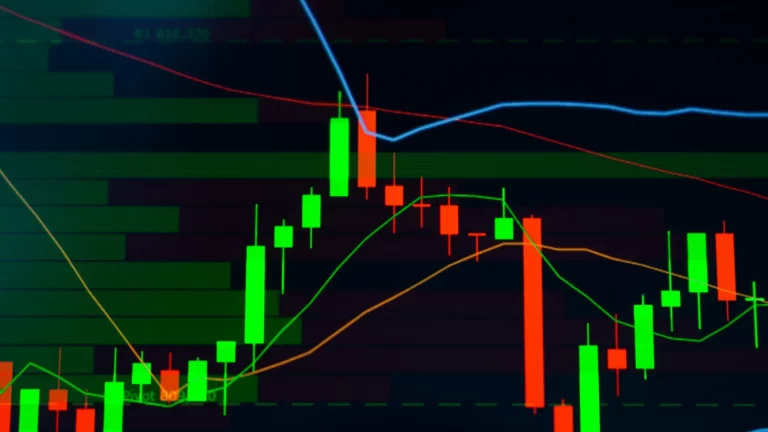Bitcoin and the Market Matrix: Analyzing Its Ties to Nasdaq, USD, and Commodities

The evolution of money reflects the continuous adaptation of human societies and technological advancements. From early barter systems to the development of physical media like gold and metal coins, and later paper cash, each innovation met the economic needs of its time. The advent of plastic cards further facilitated quick transactions, and the rise of electronic cash ushered in an era of seamless financial operations. In this continuum, Bitcoin, a decentralized digital currency based on blockchain technology, is presenting a significant challenge to traditional financial systems.
The Rise of Bitcoin and its Market Impact
Bitcoin, introduced as a peer-to-peer electronic cash system by Satoshi Nakamoto in 2008, allows for direct online payments without intermediaries such as banks or government agencies. This decentralized nature has propelled Bitcoin to the forefront of the cryptocurrency world, which has seen exponential growth. As of mid-2024, there are over 50,000 cryptocurrencies, with Bitcoin leading the charge in terms of popularity and market influence.
Bitcoin’s unique position as a decentralized asset has led to significant speculation about its valuation, often likened to historical speculative assets like Tulip Mania and the South Sea Bubble. Despite these challenges, Bitcoin’s potential for facilitating transactions and serving as a store of value is immense.

Bitcoin’s Integration with Traditional Financial Markets
Although Bitcoin operates independently from traditional financial systems, its influence on established markets is undeniable. The introduction of Bitcoin futures contracts by the Chicago Mercantile Exchange Group and the Chicago Board Options Exchange in 2017 and the approval of the spot Bitcoin and Ethereum ETFs in the US this year have marked Bitcoin’s transition from the financial fringes to the mainstream, positioning it alongside commodities like crude oil and gold.
Understanding the relationship between Bitcoin and traditional financial indicators is crucial. The Nasdaq, a leading global stock exchange, represents technology-oriented companies and market sentiment towards innovation. The U.S. Dollar Index (DXY), which tracks the value of the U.S. dollar against a basket of major currencies, offers insights into global currency market trends. Meanwhile, commodities like gold and oil are essential indicators of economic patterns and market sentiment.
Examining the Connections
Several studies have investigated Bitcoin’s relationship with traditional financial assets. The Nasdaq, representing tech-heavy stocks, has shown a positive correlation with Bitcoin, reflecting shared investor sentiment towards technological innovation. For example, during times of high uncertainty, such as the COVID-19 pandemic, the S&P 500’s performance significantly influenced Bitcoin’s returns.
Bitcoin’s relationship with the U.S. Dollar Index (DXY) is particularly intriguing. The DXY typically has a negative correlation with Bitcoin; as the dollar strengthens, Bitcoin’s value tends to decrease. This inverse relationship aligns with the broader understanding that Bitcoin serves as an alternative asset, gaining traction when traditional currencies face devaluation or inflationary pressures.
In the realm of commodities, Bitcoin’s connection with gold and oil has been extensively studied. Gold, traditionally seen as a safe-haven asset, shows a complex relationship with Bitcoin. Some studies suggest Bitcoin can act as a hedge similar to gold, particularly in times of global uncertainty. However, recent findings indicate that while gold remains a more reliable hedge, Bitcoin’s role as a safe-haven asset is still evolving.
Oil prices also impact Bitcoin’s market dynamics. Studies indicate that fluctuations in oil prices can influence Bitcoin, particularly during geopolitical crises. The co-movement between Bitcoin and oil prices suggests that Bitcoin can sometimes offset the risks associated with volatile oil markets, highlighting its potential role in energy investment strategies.
Investigations that employ robust econometric models, including Fully Modified Ordinary Least Squares (FMOLS), Dynamic Ordinary Least Squares (DOLS), and Canonical Cointegrating Regressions (CCR), explore the long-run relationships between Bitcoin, the Nasdaq, the U.S. Dollar Index, and commodities such as gold and oil. Data spanning more than 6 years provides a comprehensive view of these interactions.
The findings reveal a consistent positive relationship between Bitcoin and the Nasdaq, as well as between Bitcoin and oil prices, across different econometric models. Conversely, the U.S. Dollar Index shows a negative association with Bitcoin, aligning with theoretical expectations. Interestingly, gold does not exhibit a significant impact on Bitcoin in the long run, suggesting that while both assets serve as stores of value, their market dynamics differ.
Granger causality tests further confirm these relationships, indicating that movements in the Nasdaq, oil prices, and the U.S. Dollar Index can predict changes in Bitcoin’s price. This causal relationship underscores Bitcoin’s integration into the broader financial ecosystem, influenced by traditional market indicators.
Key Takeaways
Several studies provide valuable insights into the intricate relationships between Bitcoin and traditional financial indicators. Investors, traders, and portfolio managers can leverage these findings to develop diversification strategies and risk management measures. Additionally, future research could explore the implications of Bitcoin’s acceptance as legal tender, the impact of the 2024 Bitcoin halving event, and the potential effects of Spot ETFs on Bitcoin’s market dynamics.
Understanding these connections is vital as Bitcoin continues to evolve and integrate into the global financial system, offering new opportunities and challenges for stakeholders across the financial landscape.





